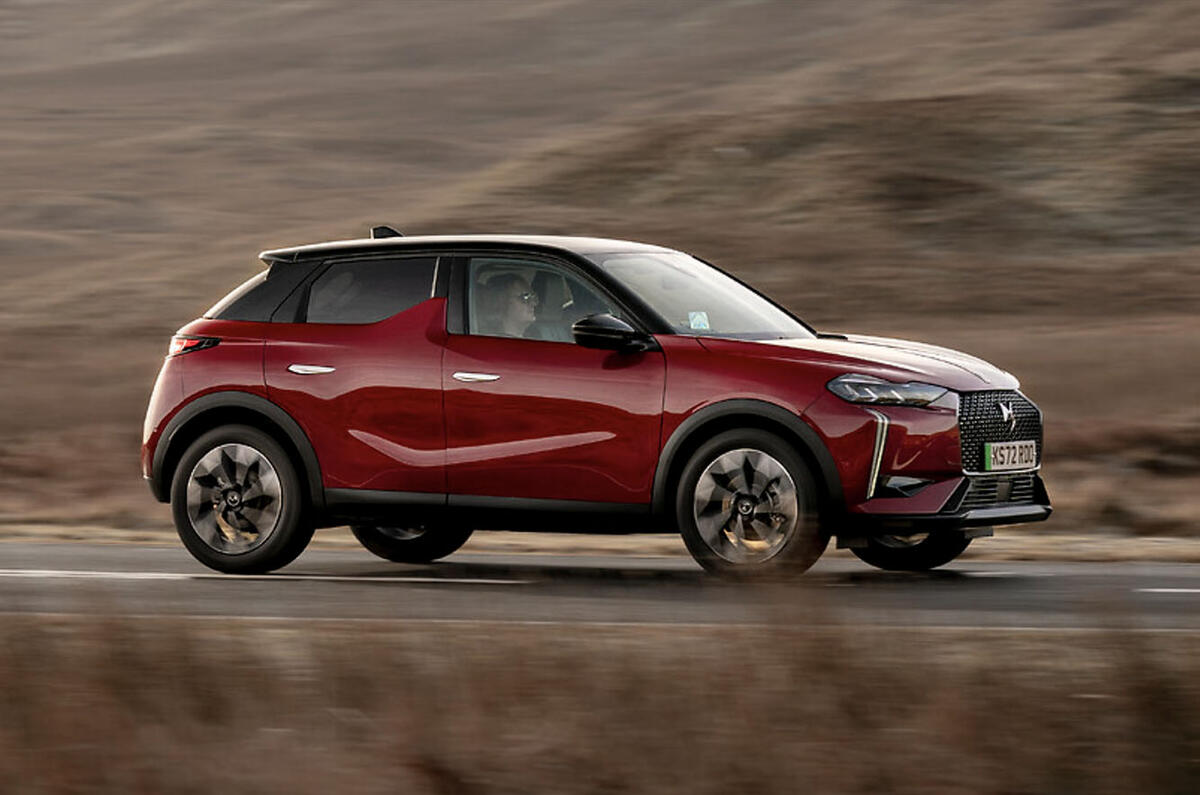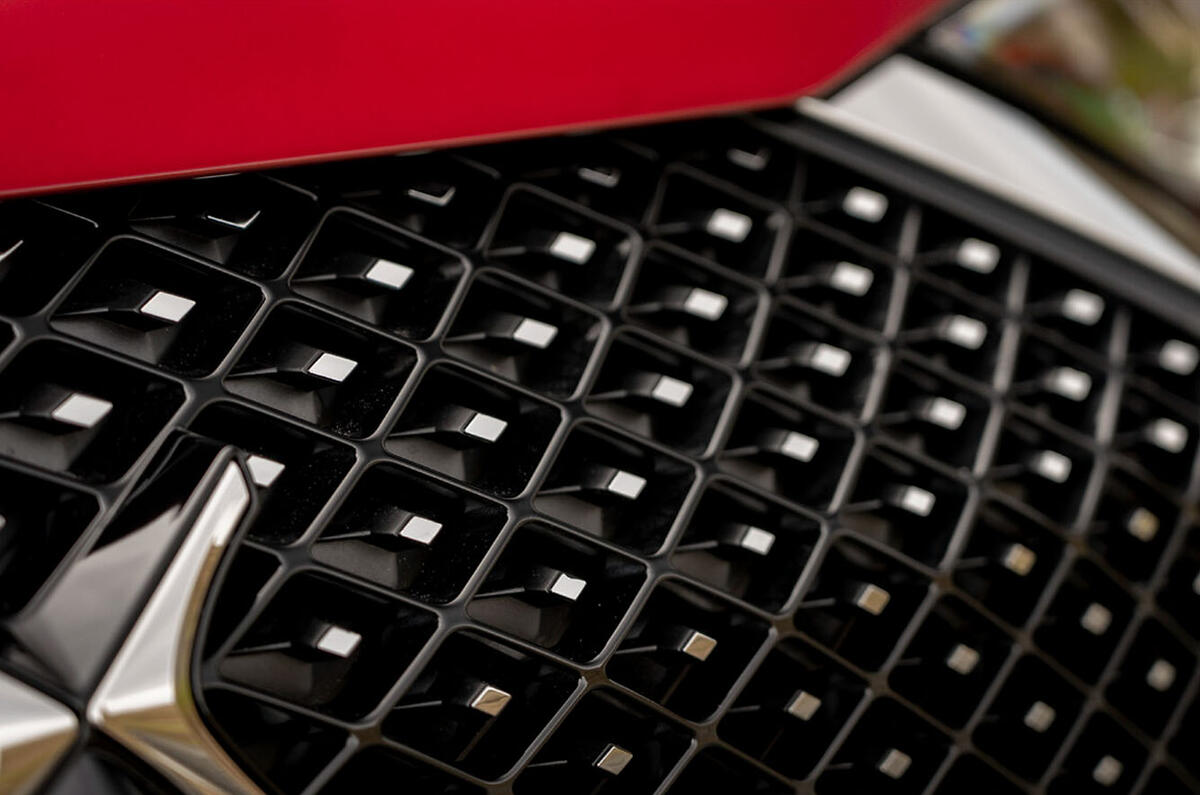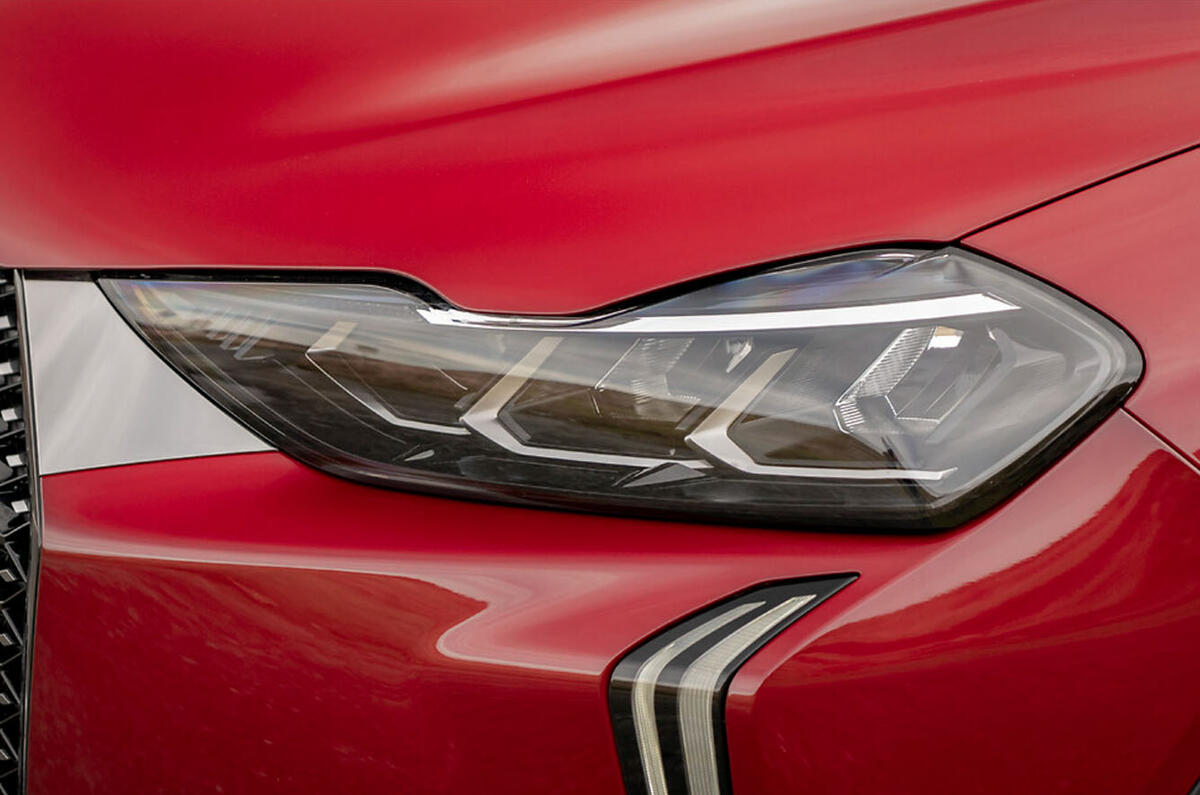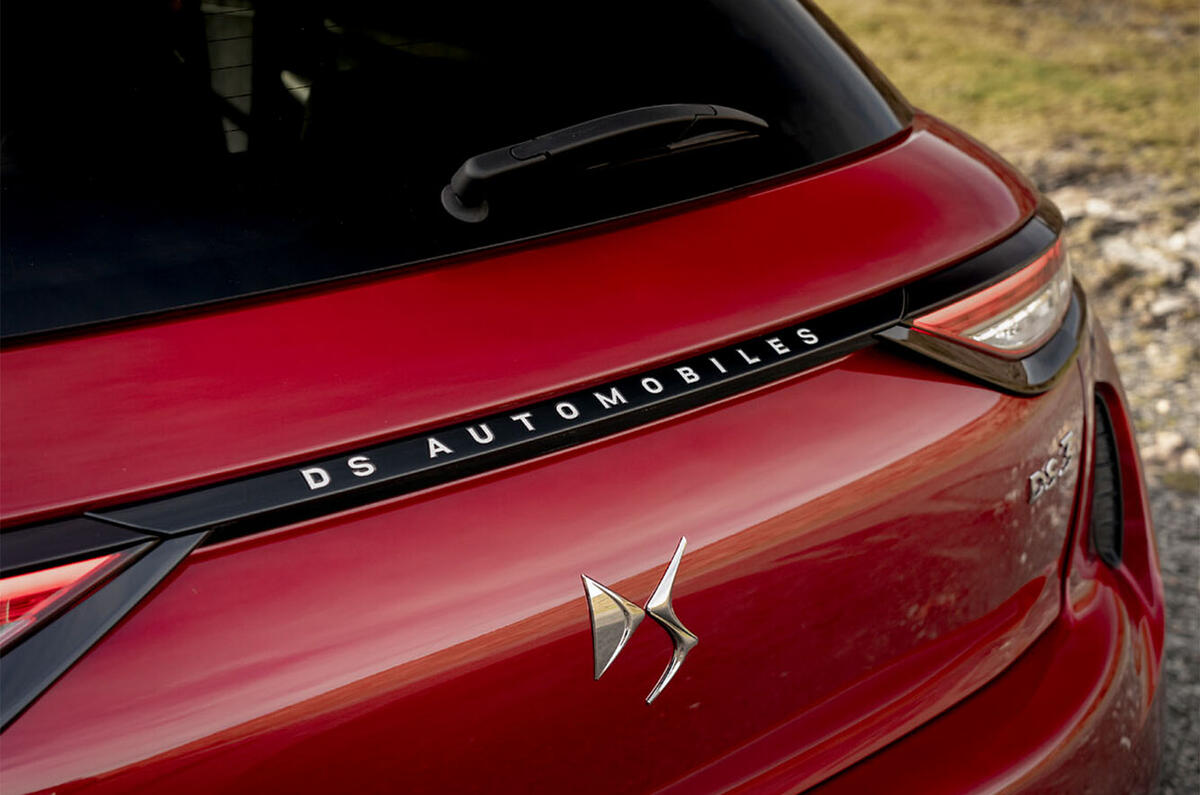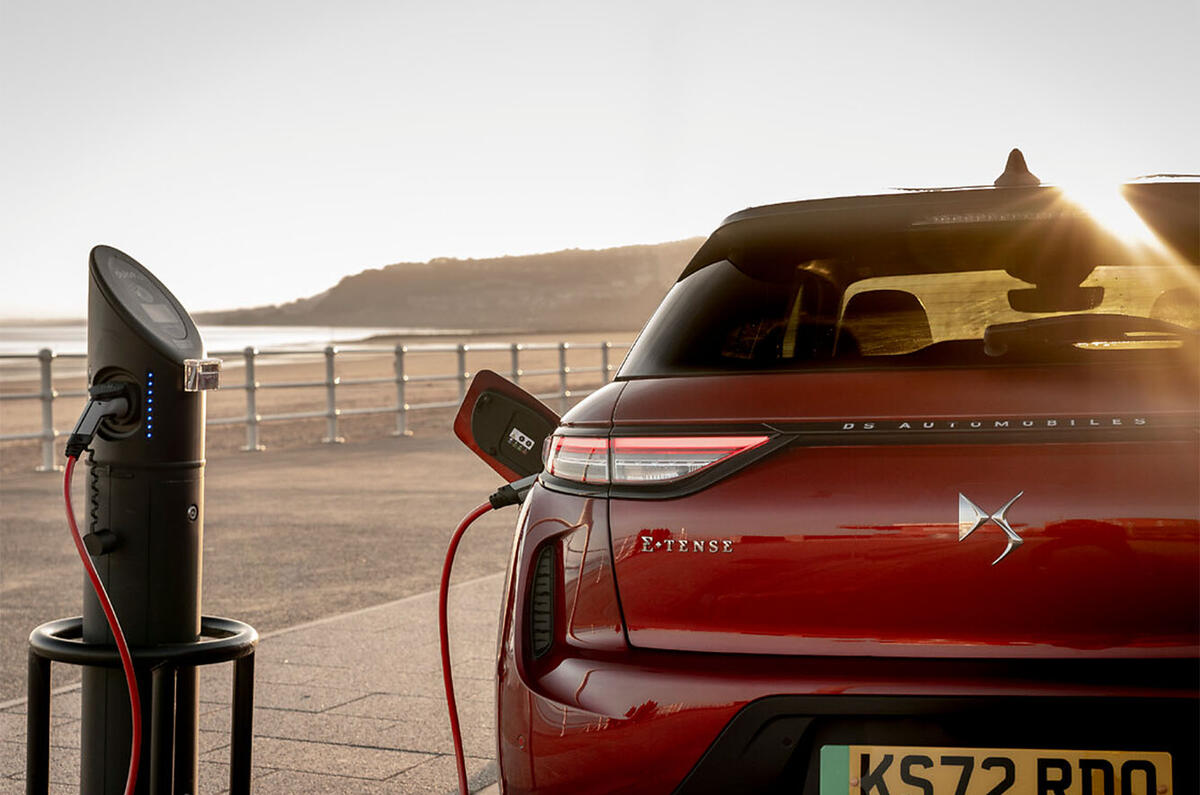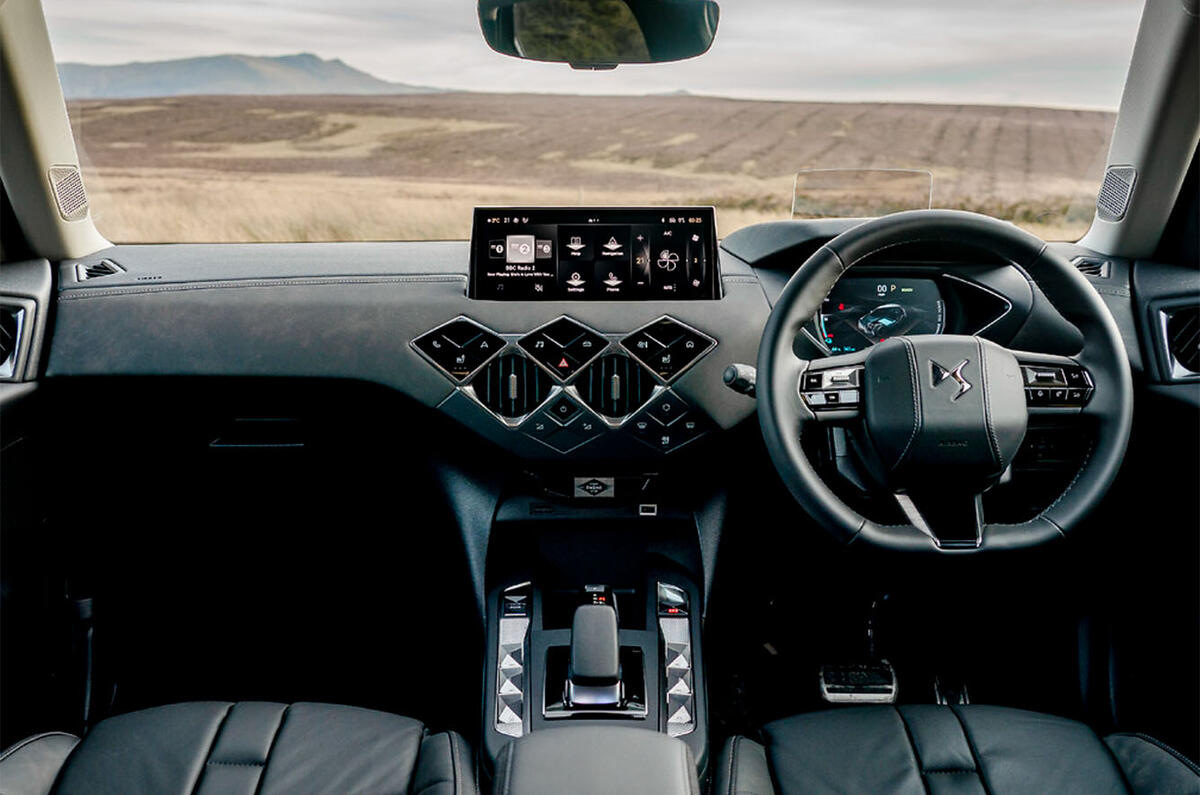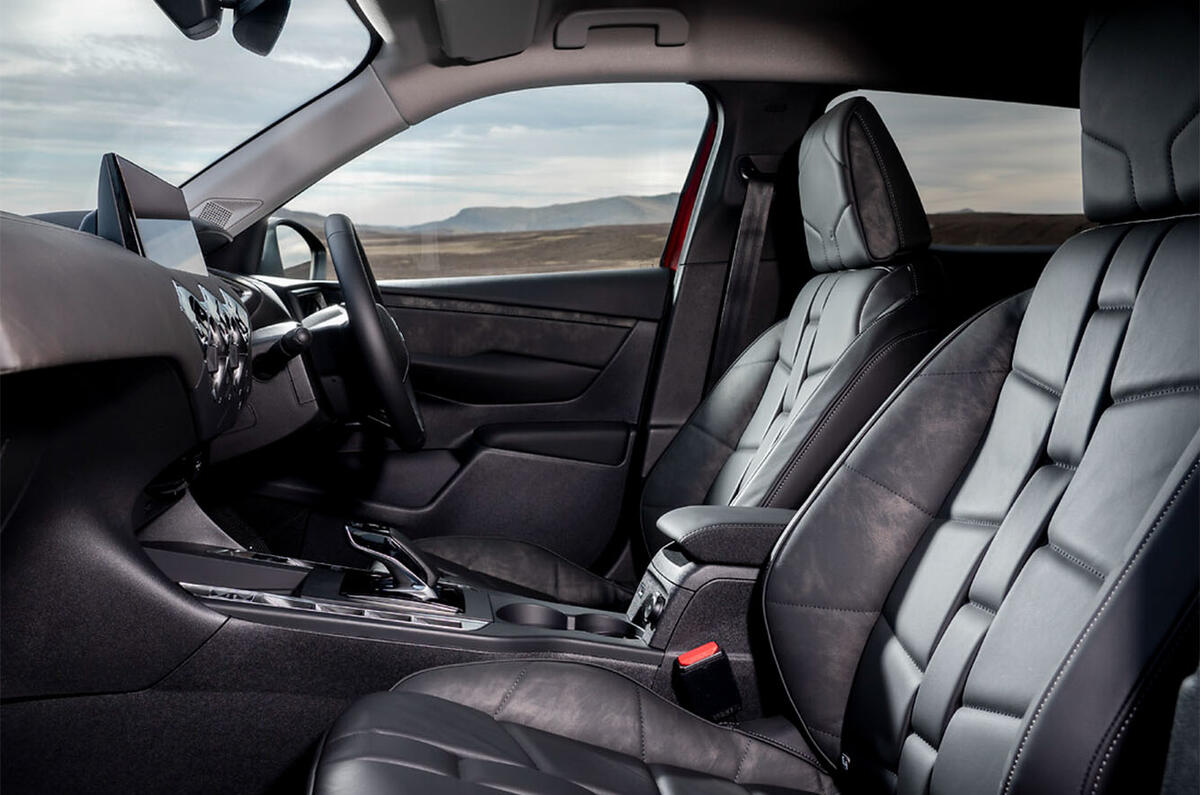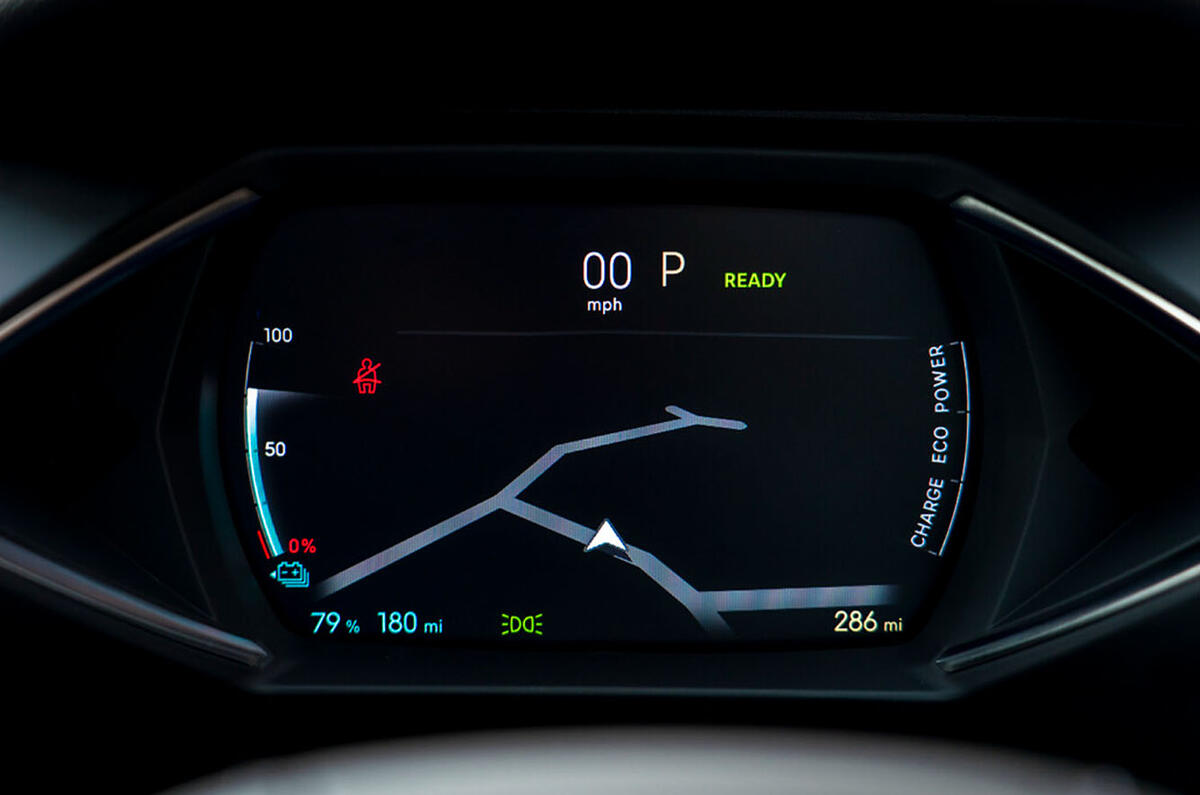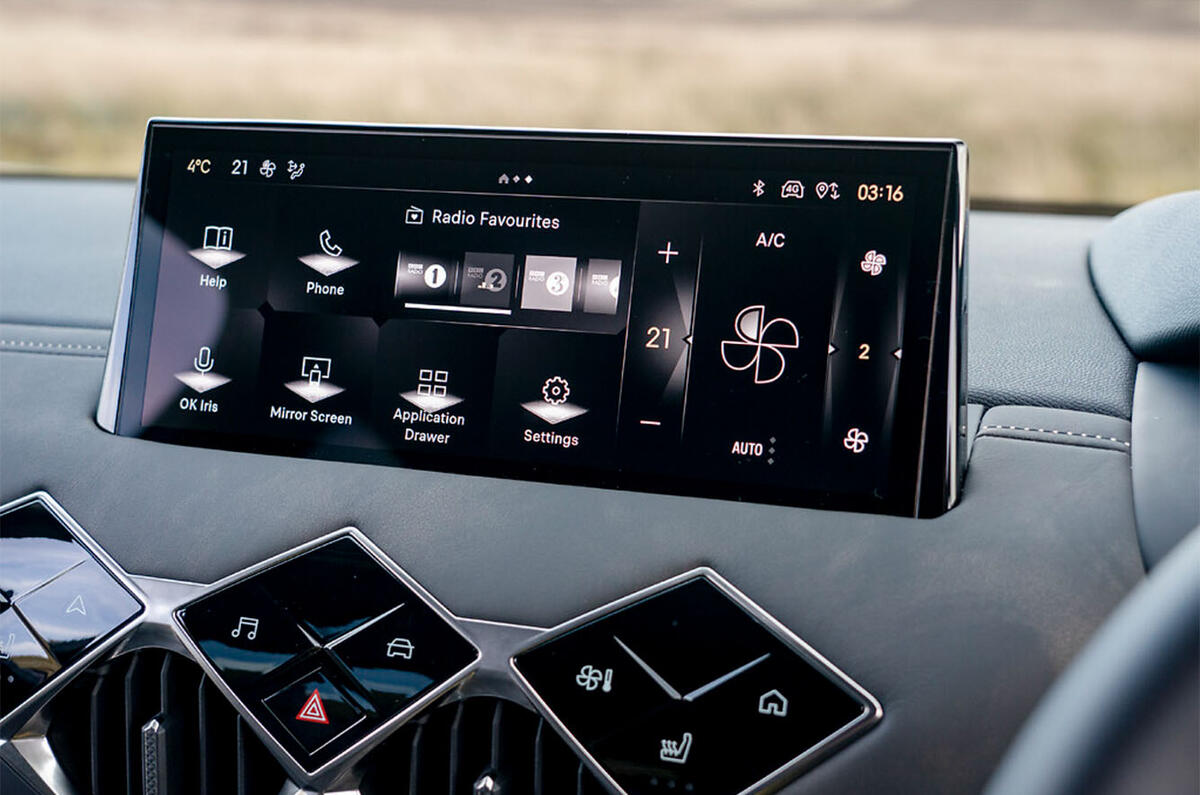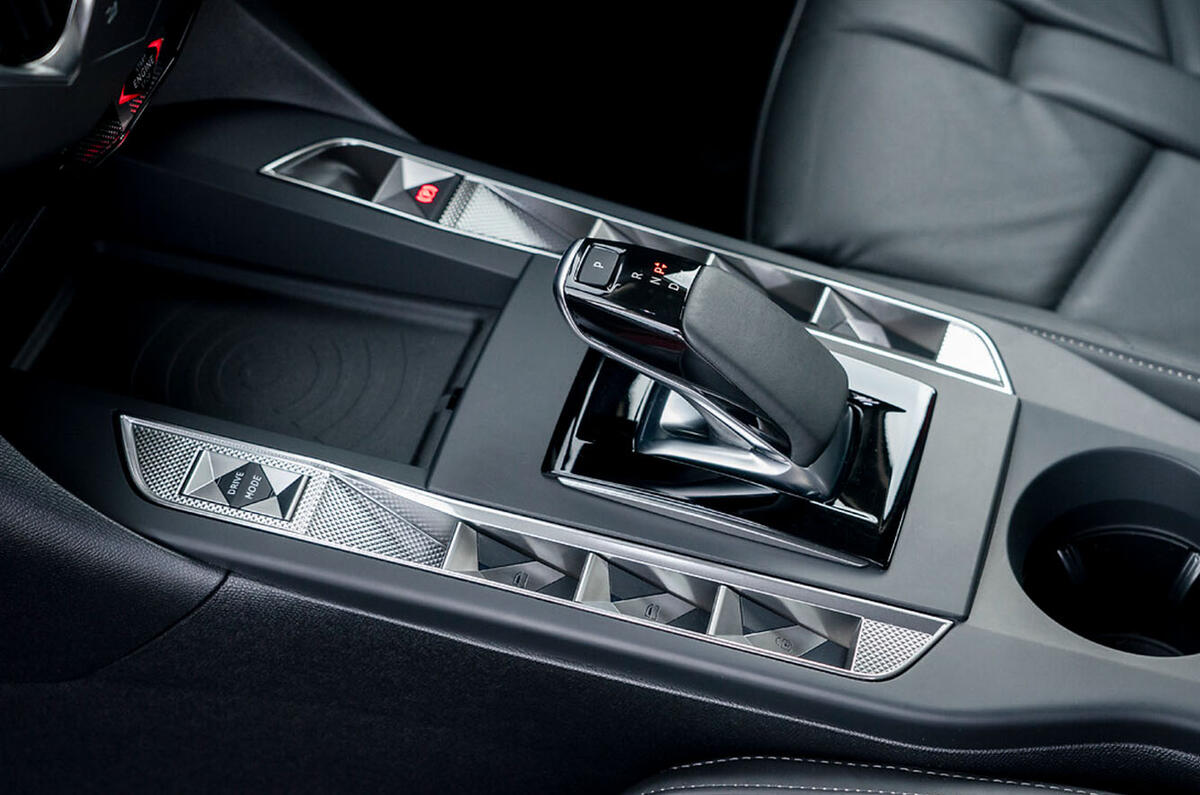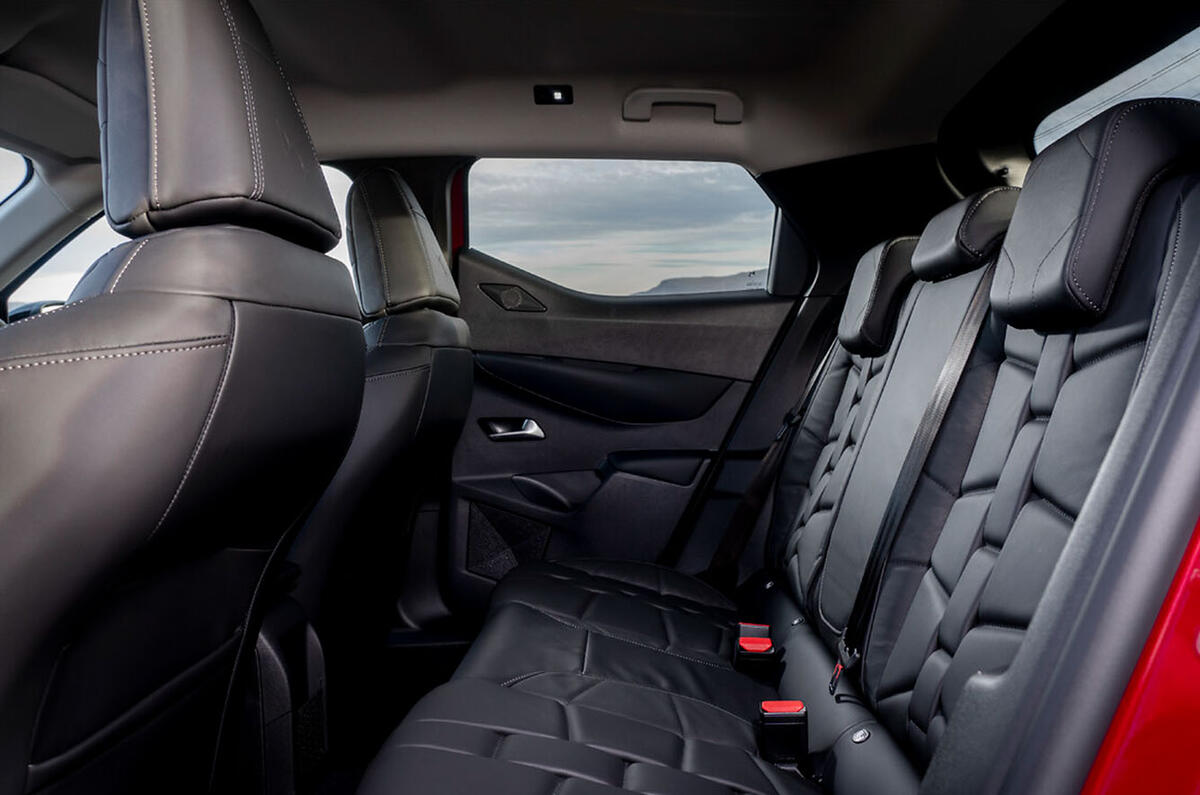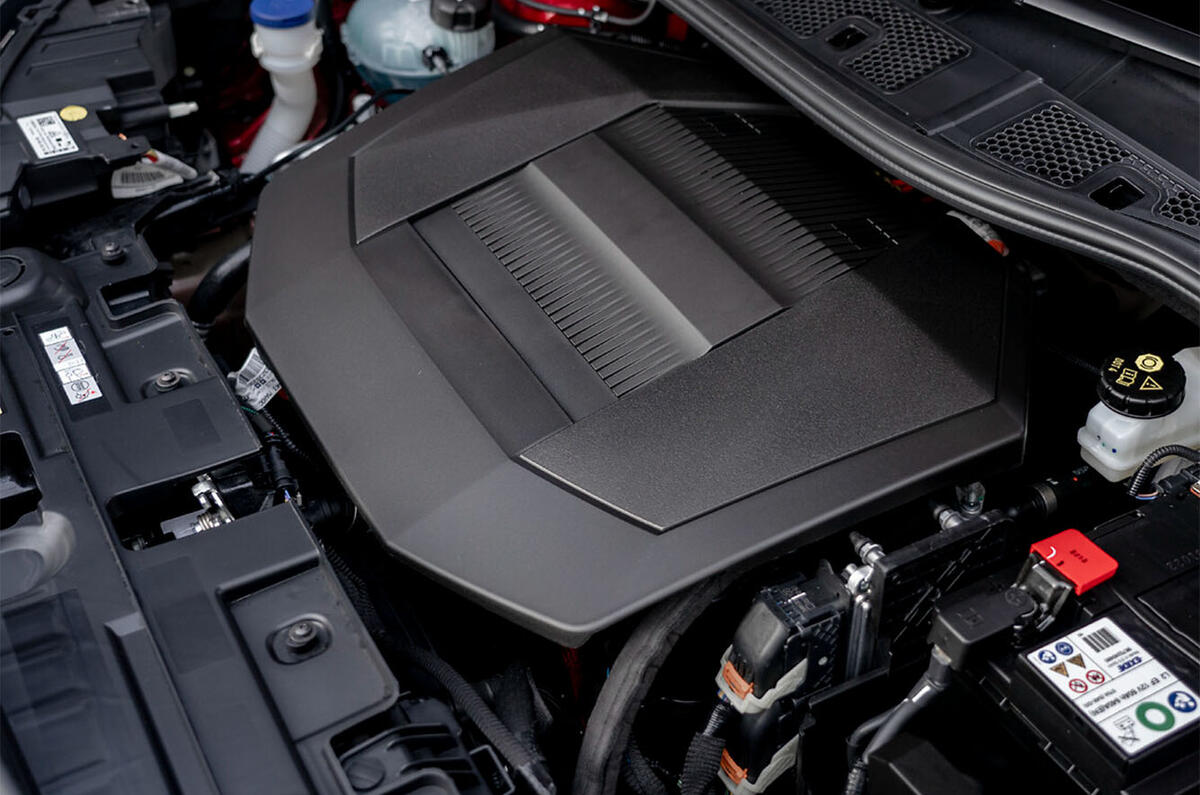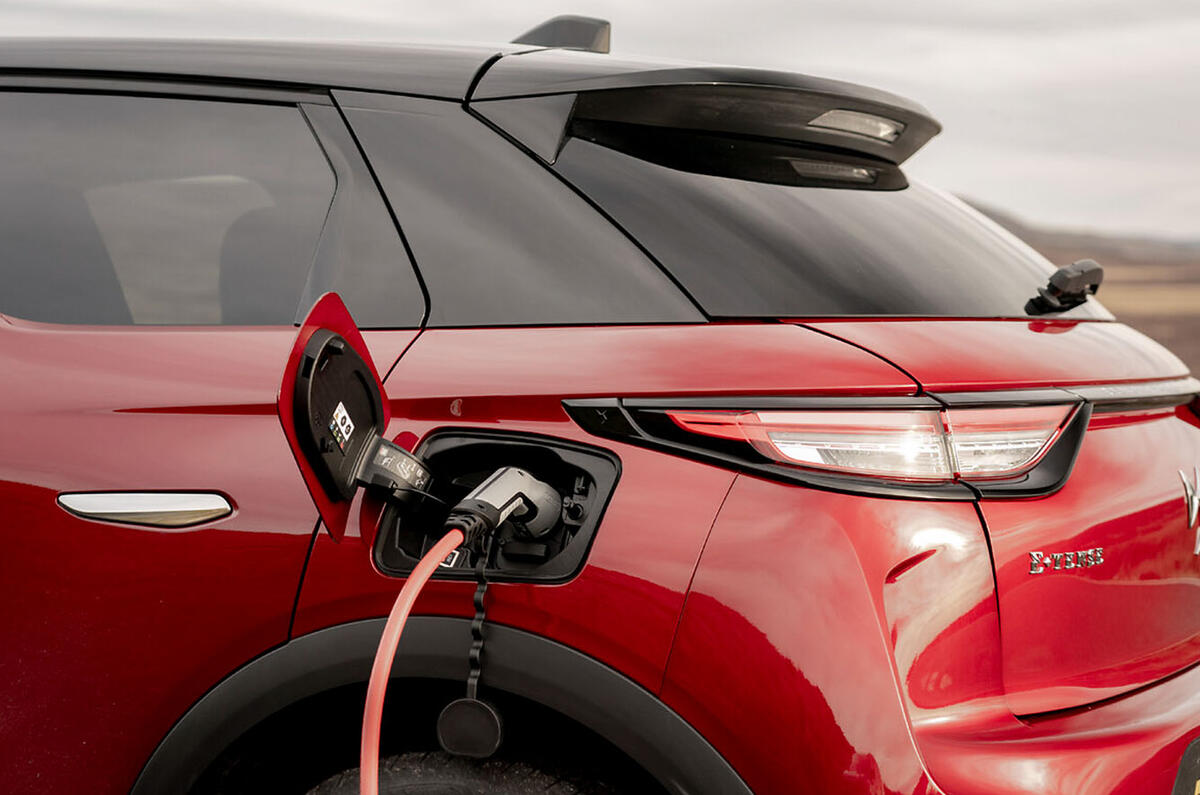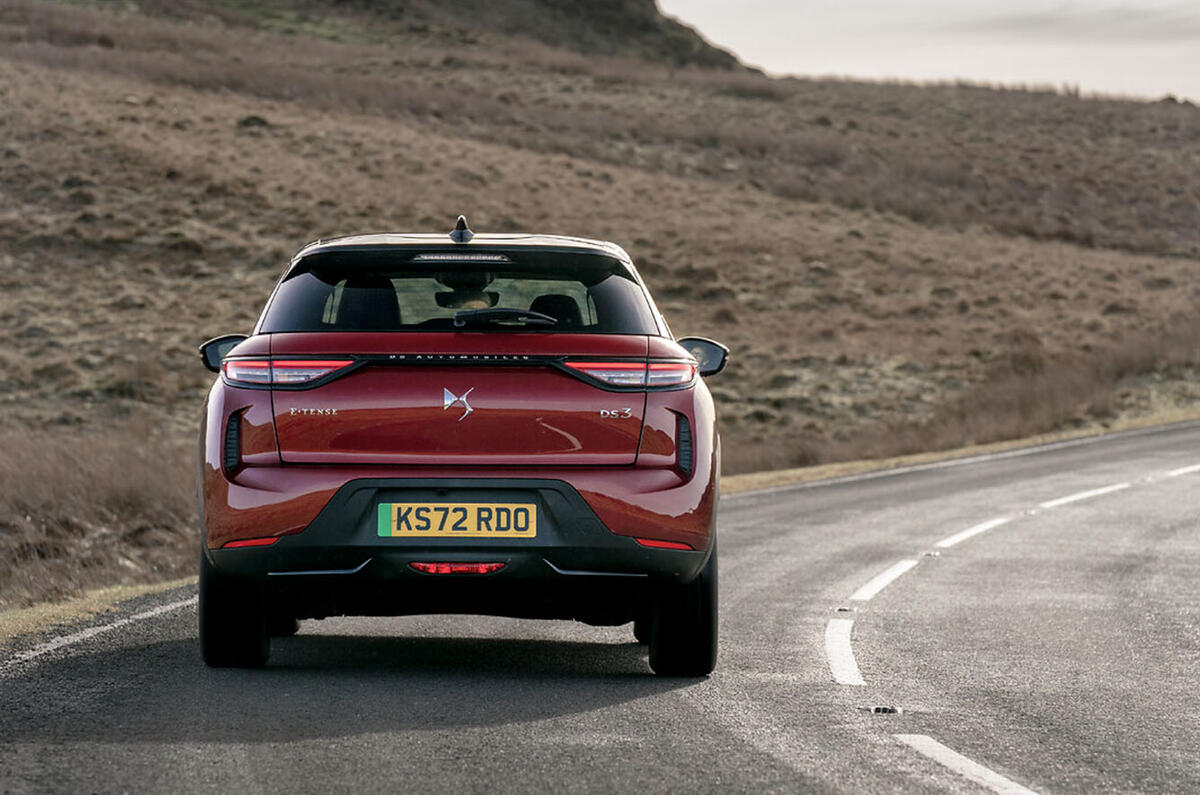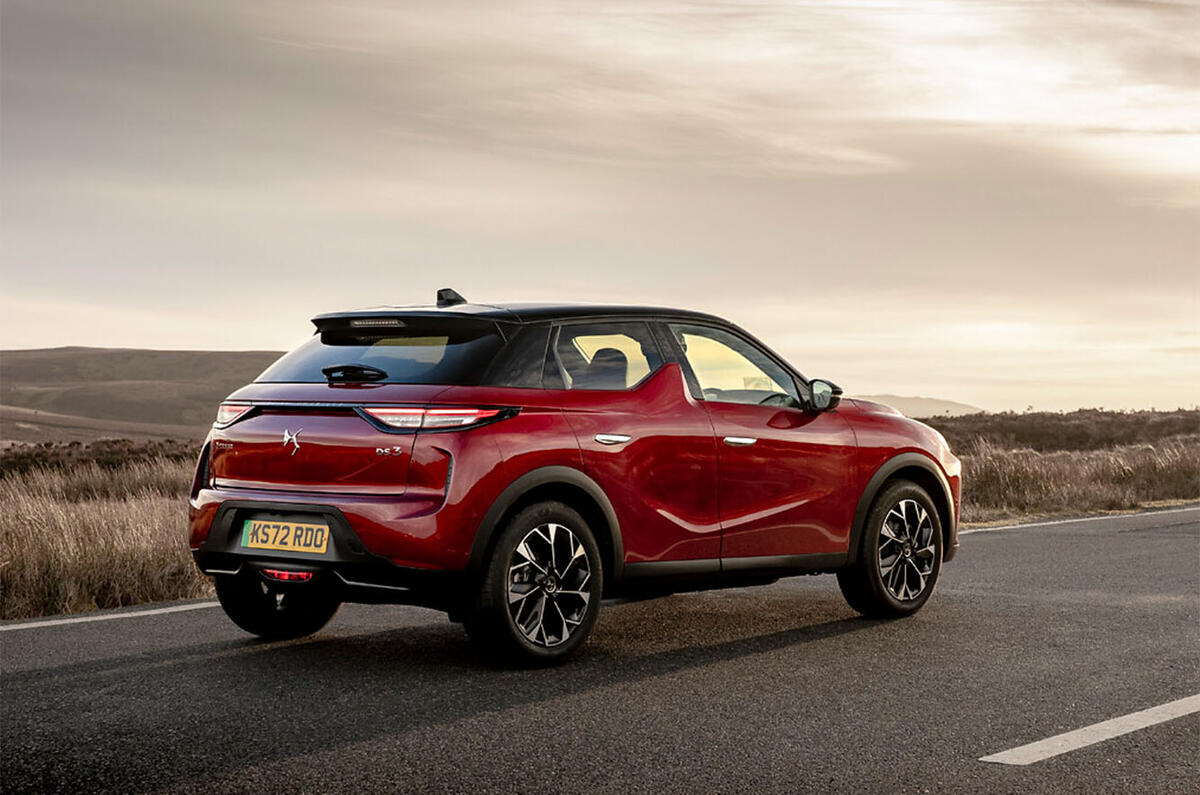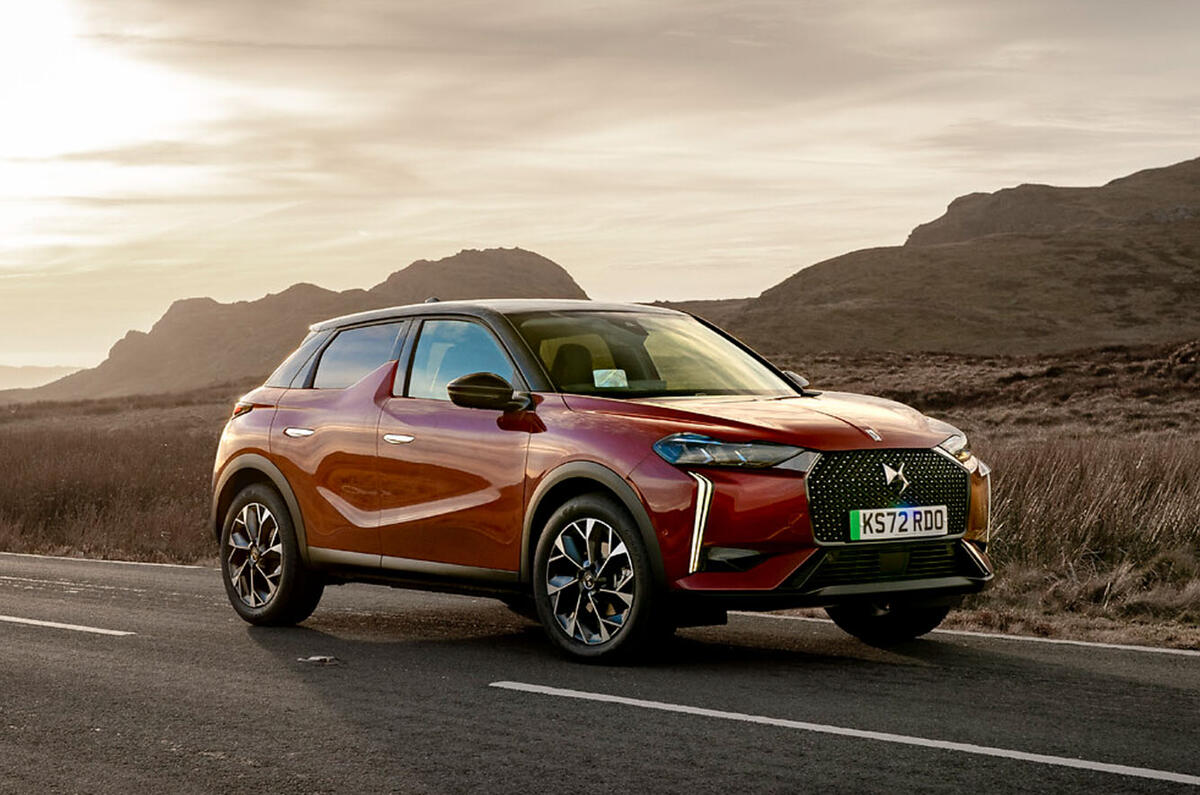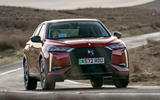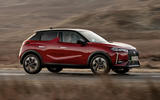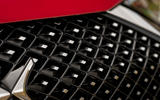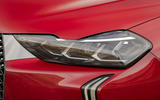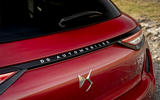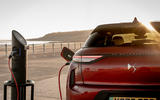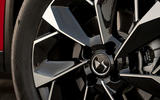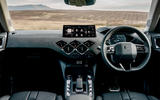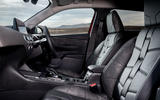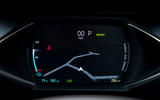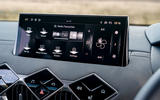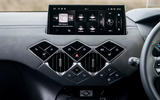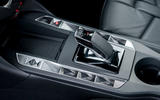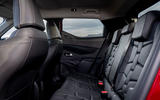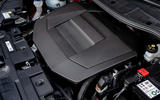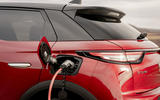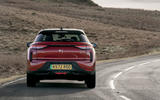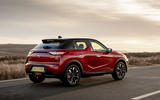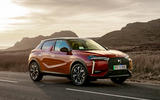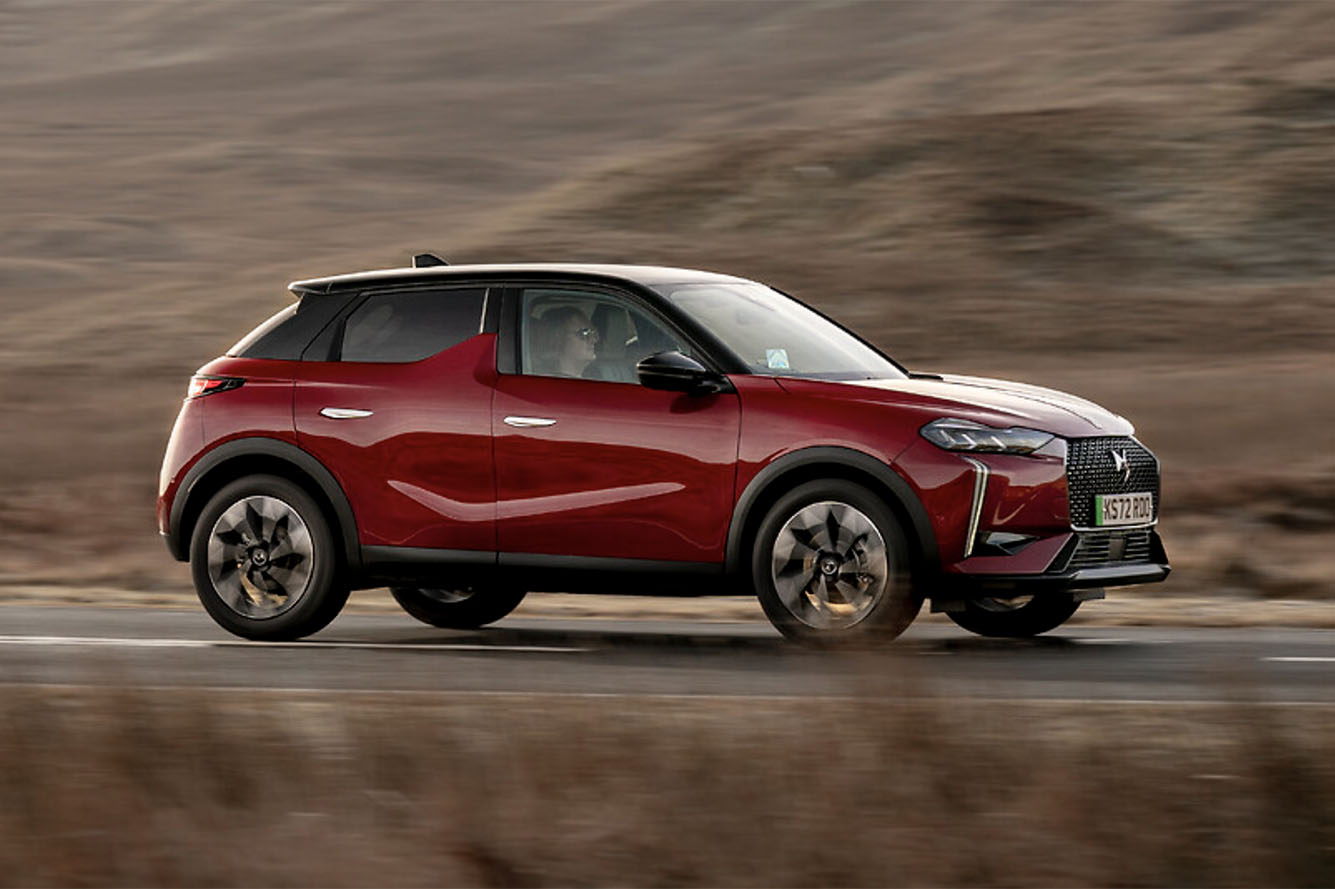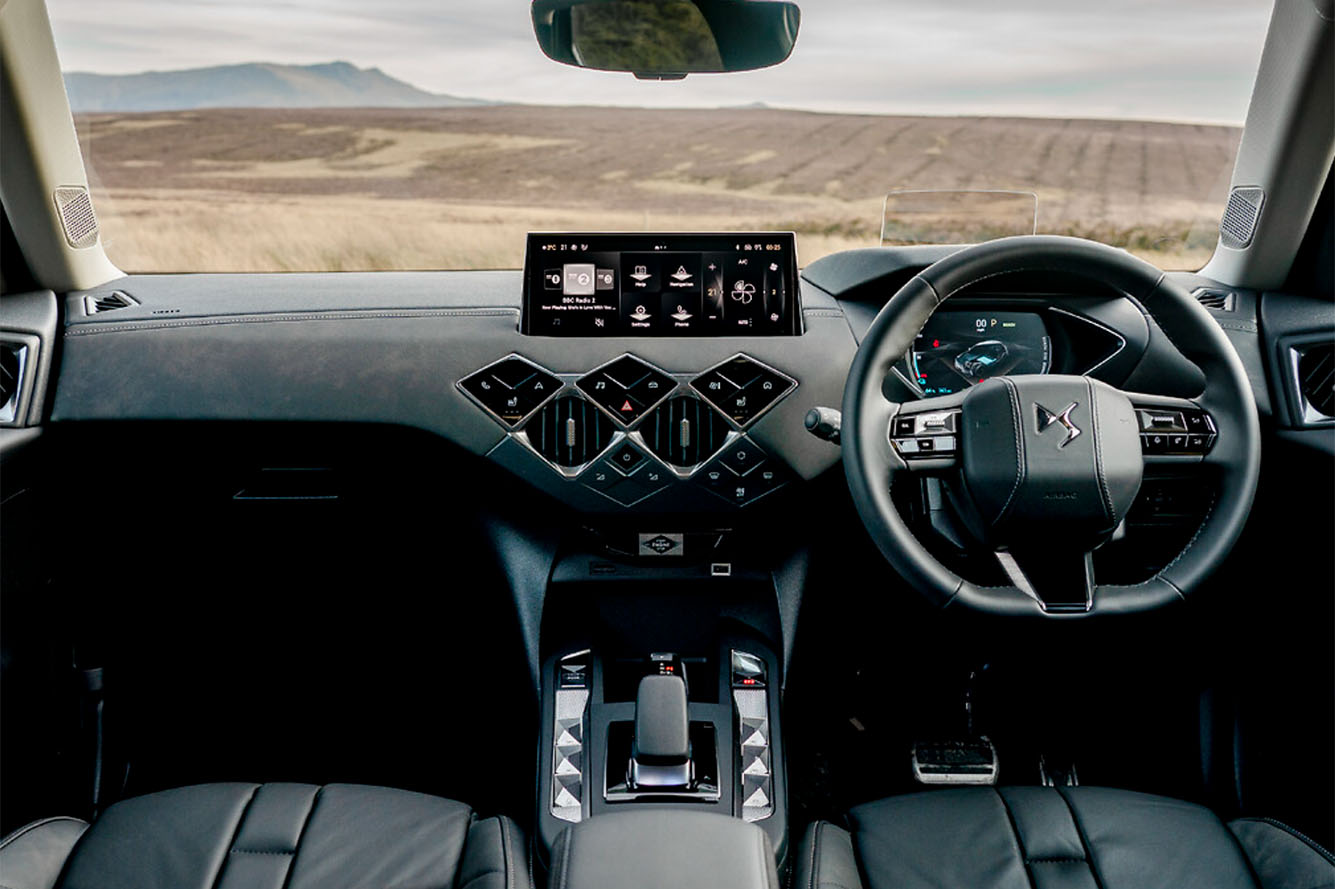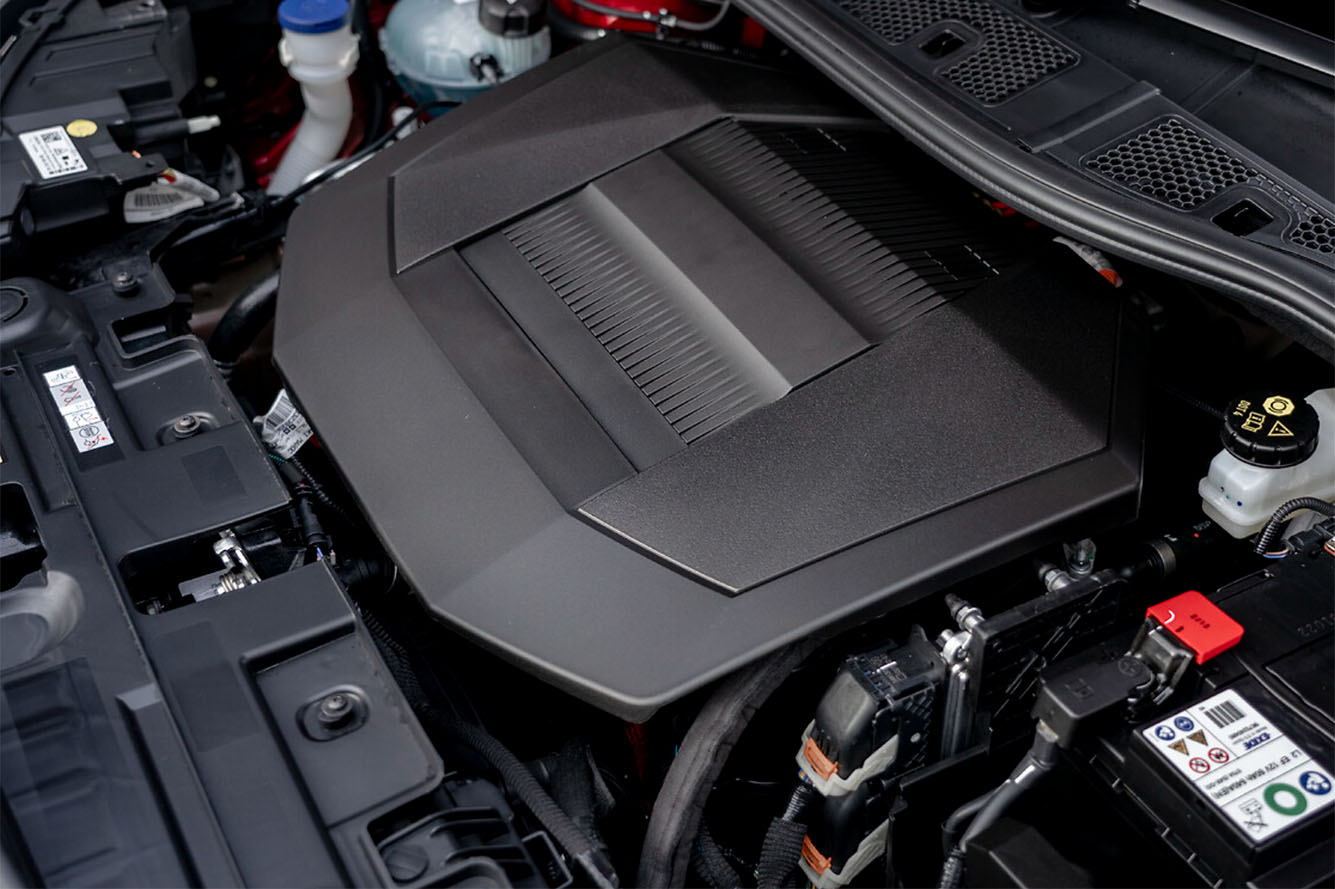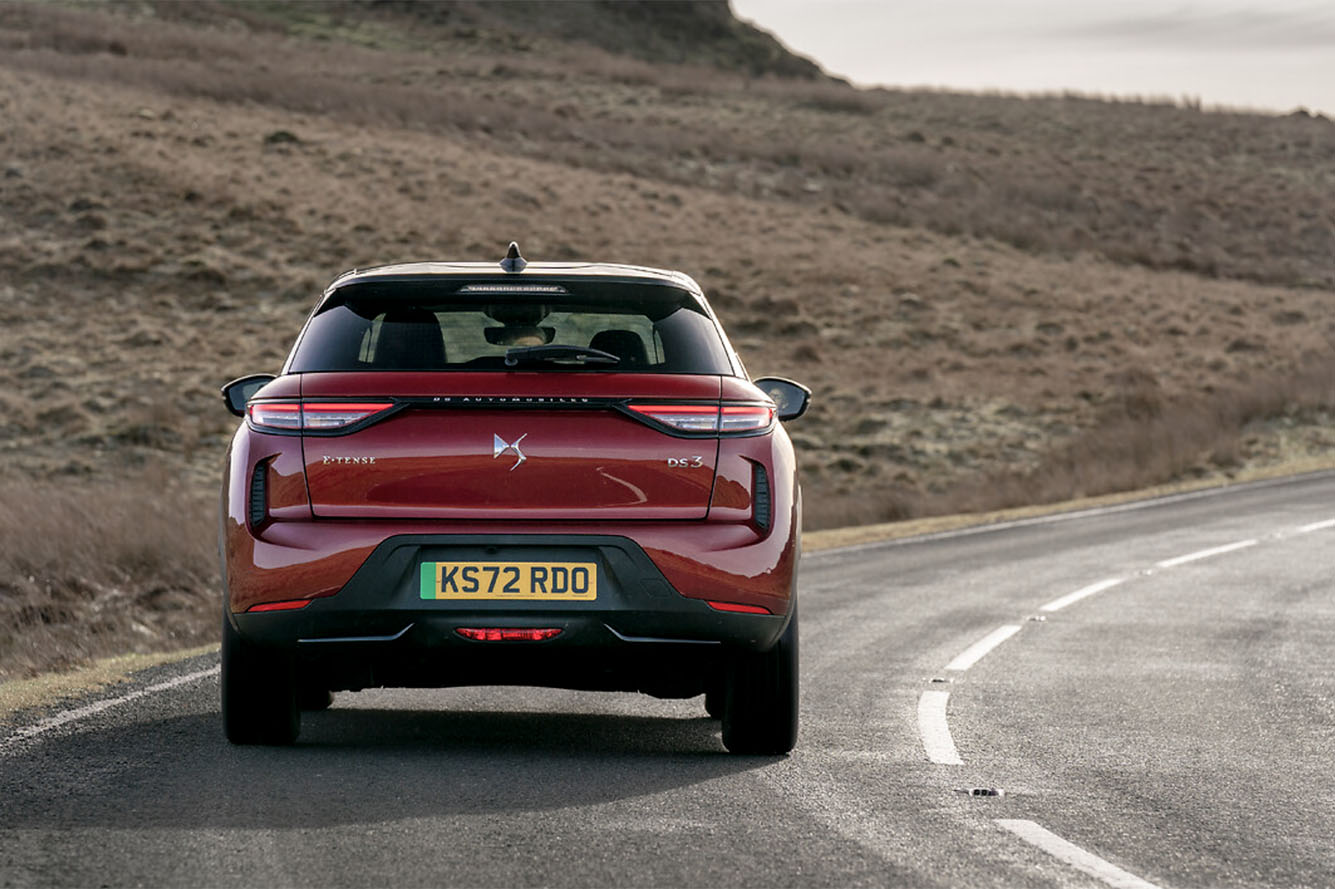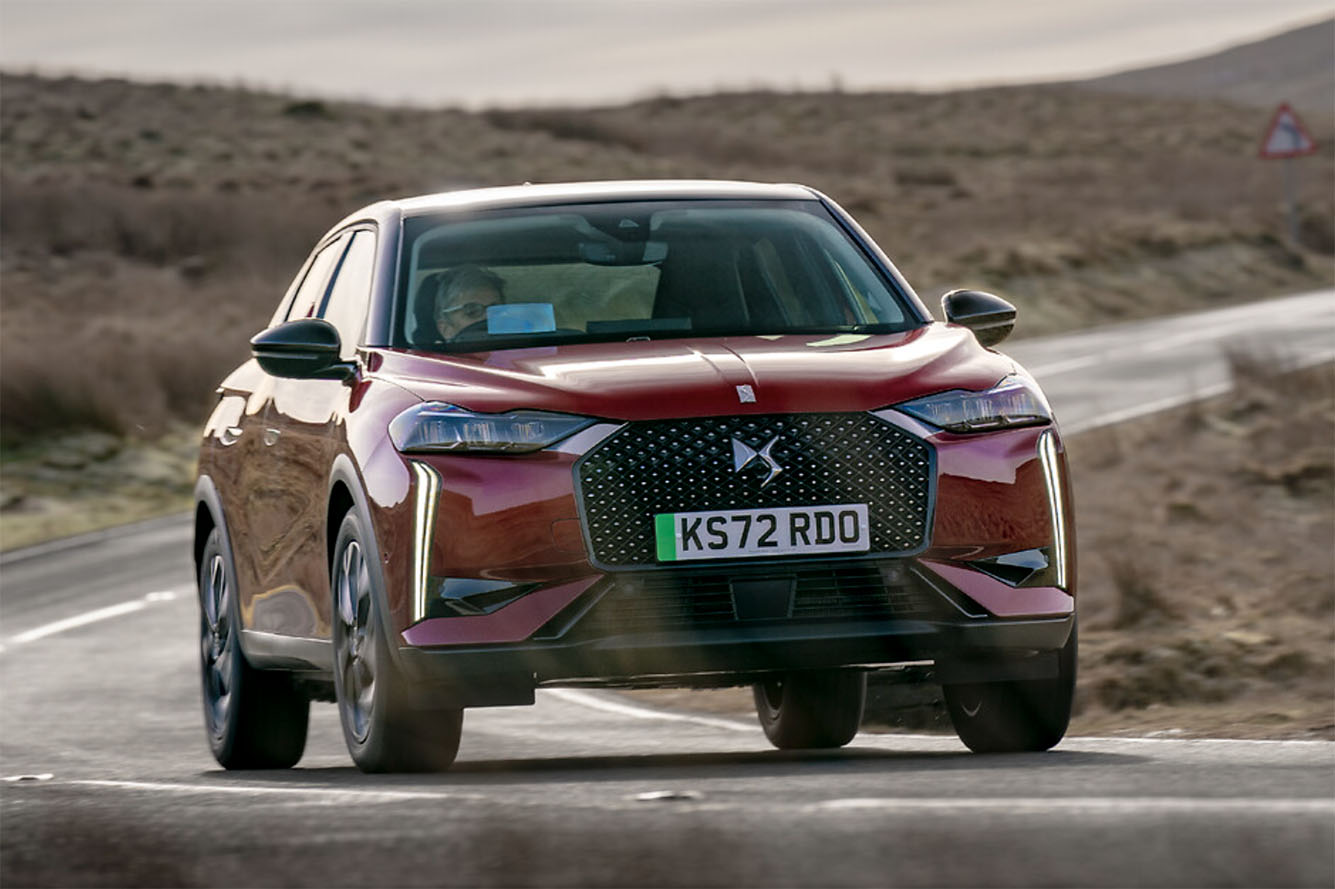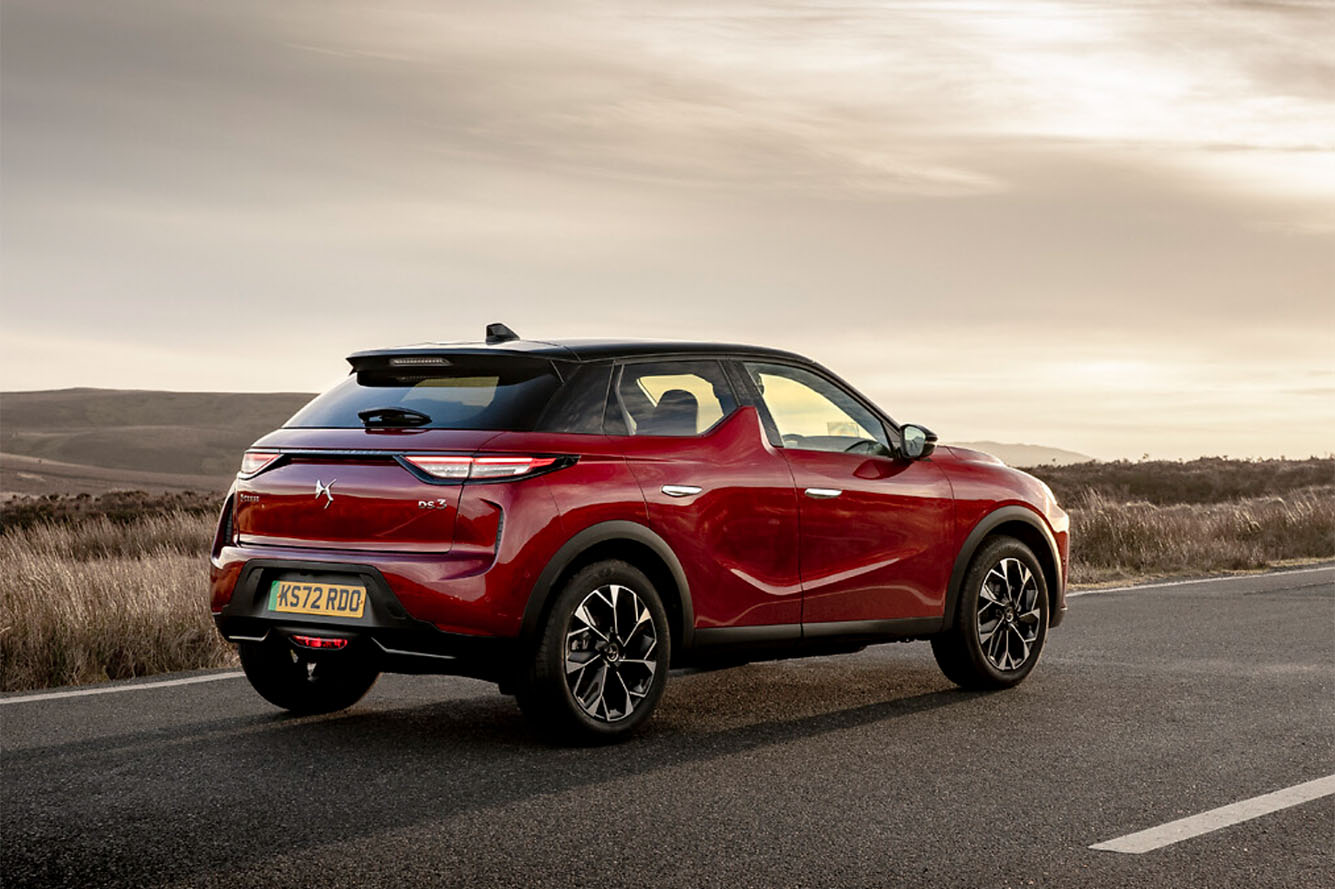Some impressively packaged and surprisingly practical cars have entered the compact EV niche of late, leaving those like the DS 3 - which promise lots of convenience, adult-appropriate second-row accommodation and an airy, expansive-feeling cabin, but don’t quite deliver any of the above - suddenly looking a bit behind the curve.
Up front, you board into an only slightly raised driving position and vantage point, but have to lift your heels over a high and obstructive sill as you get in, which feels awkward. Our Opera-spec test car had soft, spongy leather seats with separate adjustable head restraints, massagers and adjustable lumbar support. However, they lacked adjustment of either cushion extension or angle, as well as much in the way of useful supportive structure to their all-round padding.
The car’s second row makes only the kind of space available that you’d expect in a class-average supermini. There's enough, just about, for three older, taller kids, or a couple of smaller adults but taller grown-ups will struggle for both head and leg room in a way they just wouldn’t in a Smart #1.
Up front, there’s plenty of material ritz to the dashboard layout and materials, but far less deep-lying tactile material quality (lots of scratchy mouldings are to be found below knee level; storage cubbies are unlined; soft-touch materials are notable by their absence). DS’s focus was clearly on an eye-catching and unusual fascia design, and some material lavishness with upper-level materials, some of which lands (although the ‘weathered art leather’ decor of our test car looked, to these eyes, a little like it’d had one too few coats of aerosol paint).
The centre console layout, meanwhile - which takes large diamond-shaped motifs as its theme, and makes features, where it can, out of the air vents, window switches, and more - clearly gives the kind of lead to form over function that makes the latter a distant memory. The multimedia shortcut buttons are glossy, diamond-shaped touch-sensitive keys that much too often need a frustratingly long press to register any contact at all - and they’re arranged laterally so that those farthest from the driver are way out beyond the outer margins of the multimedia screen, where they’re an awkward stretch to reach.
The 10.3in DS Iris infotainment system was updated as part of the 2022 facelift. Although it is clearly related to the systems used by the likes of Peugeot, Vauxhall and Citroën, it isn’t as intuitively laid out or easy to navigate as they are. Wireless smartphone mirroring is now included, though, and the system makes it easy enough to switch between mirroring and ‘native’ modes.
DS has recently added ChatGPT-powered, fully networked voice recognition for the car, available via a remote ‘over-the-air’ software update, but the scope of its functionality seemed limited to our testers. (It could only cope up with very limited, and often wrong, answers to questions like ‘where is the nearest doctor’s surgery?’ and ‘how long will it take me to drive to Bristol?’.
DS gives you a digital instrument screen directly ahead of the driver, and a head-up display, although the former is a little small and seems to squeeze information into cramped space.
Our test car came with DS’s full Advanced Safety Pack suite of driver aids, among them lane keeping assist, traffic sign assist, active safety braking and an adaptive cruise control system. However, the lane keeping system tends to let the car oscillate between the margins of its lane, rather than keeping it centred when it’s activated. Meanwhile, our test car’s traffic sign assist system had a software bug that made it convert what it assumed were speed limits posted in kilometres per hour into much lower miles per hour figures (45mph, 37mph and 25mph when passing motorway gantries, for example) before it offered to adopt new cruising speeds, so it was useless.
Considering the car's £40,000–plus advertised list price, you have a right to expect better of this interior almost across the board.




